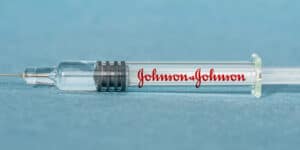
An inferior vena cava (IVC) filter is a medical device that deters blood clots from traveling from places such as the thigh to the lungs. The inferior vena cava itself is one of the largest veins and is located in the center of the human body. It is the vein that imports oxygen-depleted blood from the lower portion of the body to the heart, which then pumps the blood to the lungs to be replenished with fresh oxygen.
The main purpose of the IVC filter is to prevent a pulmonary embolism, which is a blockage of a pulmonary artery in the lungs typically caused by a blood clot. The IVC filter functions when placed in the inferior vena cava vein by catching blood clots that pass through, thereby preventing clots from traveling to the heart and causing a pulmonary embolism.
One of the most harmful kinds of blood clots is known as a deep vein thrombosis (DVT), which tends to occur in a deep interior region of the body, such as the thigh. While an IVC filter does not protect a person from developing a DVT, which can pose a significant health risk, an IFC filter can prevent the DVT from traveling to the lungs and causing a pulmonary embolism.
WHY YOU MIGHT NEED AN IVC FILTER
IVC filters are recommended for people who have or at significant risk for developing a DVT or a pulmonary embolism, including having had these conditions in the past. Risk factors for DVT and pulmonary embolism include:
- Decreased mobility and increased body inflammation, both of which may lead to blood clotting
- An inherited blood disorder
- A significant injury to a deep vein in the leg
- Smoking; pregnancy
- Obesity
- Cancer treatment.
Another common treatment for DVT and pulmonary embolism is blood-thinning medications, such as Xarelto and warfarin, which may also be used in tandem with an IVC filter. Some people choose not to use blood thinners due to pre-existing conditions that make it unsafe for them—because blood thinners can result in excessive bleeding.
For a free legal consultation with a Personal Injury Lawyer
WHAT TO EXPECT WITH IVC FILTER IMPLANT SURGERY
The procedure takes about an hour and requires a several hour in-patient recovery period. Headache and nausea are common, but most patients are able to return home the day of the operation. Mild bruising around the operation location and mild pain are also common short-term problems. Adverse reactions to IVC filter operation, for which you should call your doctor, include:
- Excessive bleeding, fluid leaking, swelling or pain at incision the site; incision site becomes unusually red or sore; infection at site of insertion limbs become cold and numb; persistent headache or nausea; chest pain; fever.
IVC FILTER LAWSUITS
Most IVC filter lawsuits are filed on the basis of adverse events caused by the device, including:
- Complications resulting from defects in the design of retrievable IVC filters
- Failure to notify consumers of known hazards
- Design and/or manufacturing defects
- Manufacturer or marketer negligence
- Breach of warranty on the device
Most IVC filter lawsuits are based on a claim of manufacturer or marketer negligence, which is the failure of a company to act in a way that demonstrates reasonable care to ensure the safety of the consumer or patient. When a product causes undue harm to a consumer, the court will typically look at who is liable for the damage. If the consumer used the product in a manner that was blatantly wrong or was fully informed by the manufacturer or marketer of its potential hazards, then the client may be liable. However, if a company claims its product is safe, or fails to adequately warn consumers of its dangers, then the company may be liable for damages experienced by the consumer.
As of 2018, approximately 10,000 personal injury court cases for ICV filters have been filed against the numerous ICV filter product manufacturers. In notable cases, millions of dollars have been awarded to plaintiffs with serious damages.
We Are committed to winning and winning big for our clients



